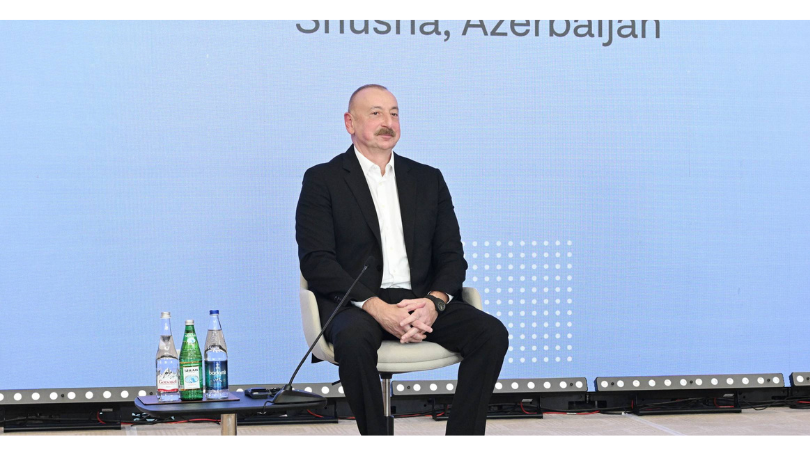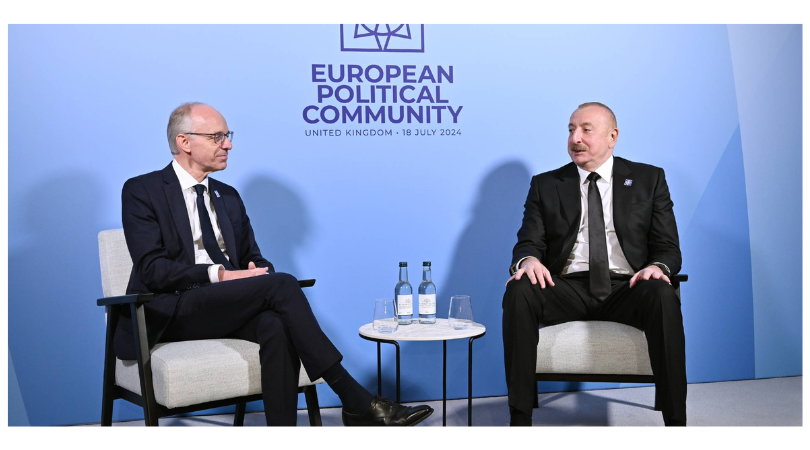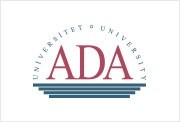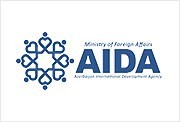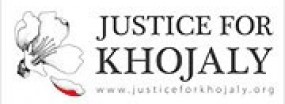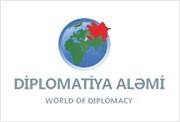Landmines problem in Qarabagh: the purposes and consequences of Armenia's extensive landmining activities, and its continued refusal to assist with Azerbaijan's demining programme
Azerbaijan is set on to restore and rebuild Qarabagh, reviving the life in the liberated lands and transform the region into one of the most prosperous parts of the world. The reconstruction of the liberated lands is a complex, costly and time-consuming process which is being meticulously and systematically implemented in spite of a number of serious obstacles. However, the landmines planted by Armenia throughout the region and Yerevan’s refusal to hand over accurate landmine maps not only delay the reconstruction and drastically raise the cost of the whole process, but also continue to cost the lives of many Azerbaijani citizens.
Armenia argues that its massive contamination of the formerly occupied territories of Azerbaijan with landmines was for defensive purposes. However, one cannot dispute that landmines once placed, do not discriminate, whether between the footfall of a soldier fighting, or a journalist reporting on a story or a child playing in a field. The purpose of Armenia's landmines is clear, in where and when Armenia laid the landmines, and in Armenia's ongoing refusal to provide accurate information about their locations.
These minefields run in lines alongside the roads and towns, settlements and villages[1]. There is no legitimate “defensive” reason, for example, for Armenia to plant landmines in villages in the Zangilan district, which is approximately 60 km away from the former line of contact and had a population of over 30,000 ethnic Azerbaijanis[2]. There is no legitimate “defensive” reason for Armenia to plant landmines under gravestones in the Aghdam region, which had a population of over 100,000 ethnic Azerbaijanis[3]. And there is no legitimate “defensive” reason for Armenia to bury landmines in agricultural fields away from the line of contact that, until recently, were in active use.
The obvious purpose of Armenia's actions is to prevent ethnic Azerbaijanis who had been displaced from those areas from returning home. As part of its scorched earth policy[4], Armenia planted landmines even as it withdrew from the formerly occupied territories as the result of Trilateral Statement of 10 November 2020. In the same way that Armenian forces burned homes and schools and destroyed infrastructure, rather than allow Azerbaijanis to step foot inside[5], Armenian forces salted the earth with landmines to ensure that Azerbaijanis could not safely return to their homes[6].
In this posture, coming after the first anniversary of the end of the conflict, the main question now is not Armenia's purpose in planting mines in Azerbaijan’s formerly occupied territories, but rather Armenia’s obligation now to facilitate the clearance of landmines it planted in Azerbaijan's territory because of the discriminatory effect on ethnic Azerbaijanis seeking to return home. Armenia's failure to provide critical information that could safeguard civilian lives in Azerbaijan's territory could have no possible defensive purpose for Armenia.
The international community recognizes the devastating and discriminatory effects of Armenia's refusal to provide Azerbaijan with landmine maps. The European Parliament, for example, noted in May 2021 that “up-to-date maps of minefields” would “permit civilians to return to former conflict regions”[7]. Other international actors recognize the continuing “civilian casualties”[8], “ongoing death and injury”[9] and “horrific injuries and incidents” that result[10].
And the effect on ethnic Azerbaijanis is clear: those that attempt to return home remain at constant risk of landmines. Their deaths, injuries, and continued exclusion from the territories they call home represent the ongoing effects of Armenia's landmines and its refusal to provide information about their locations.
Armenia argues that landmines have been a “long-standing” problem in this area and include unexploded ordnances, and therefore engages in the speculation that a civilian death today may be a consequence of a landmine laid in the First Garabagh War. In any event, however much it tries now to suggest that it is “unclear” that Armenia laid mines during the Second Garabagh War, Armenia cannot deny that it holds vital information about the locations of the landmines. Just a few months ago, Armenia provided maps purportedly outlining the location of 189,000 mines[11]. Armenia also cannot deny that it has provided what Armenia's Prime Minister openly admits is only a “tiny part”[12] of the information it holds[13], and it does not deny that the information it has provided has been woefully inadequate[14].
Armenia also cannot make its obligations conditional by taking refuge in its offer to provide its landmine maps only if Azerbaijan grants blanket immunity to Armenians who are being tried for, or have been convicted of, serious crimes[15]. It is extraordinary for Armenia to trumpet its demand that Azerbaijan let convicted torturers walk free before Armenia will provide urgently required, lifesaving information.
Armenia's ongoing refusal to provide accurate information about the location of the landmines continues to prevent hundreds of thousands from returning to their homelands. These acts and omissions have both the purpose and the effect of impairing the fundamental rights of Azerbaijanis, to quote the International Court of Justice, “as a distinct social group [based on] their national [or ethnic] origin”[16]. Obtaining mine maps will save the lives of tens of thousands of citizens, including those involved in mine clearance, and will accelerate the implementation of reconstruction and rehabilitation projects initiated by Azerbaijan in the liberated territories, accelerating the normalization of life and supporting the efforts for sustainable peace in the region.
[1] Mine Action Agency of the Republic of Azerbaijan, Assistance Required for the Republic of Azerbaijan in Humanitarian Mine Action for Safe Reconstruction and Return of IDPs to the Conflict Affected Territories of Azerbaijan (2021), p. 5.
[2] USSR State Committee for Statistics, Results of the 1989 All-Union Population Census, Population Structure by Ethnicity, Native Language and Second Language of the USSR Peoples, Moscow 1989 (certified translation).
[3] USSR State Committee for Statistics, Results of the 1989 All-Union Population Census, Population Structure by Ethnicity, Native Language and Second Language of the USSR Peoples, Moscow 1989 (certified translation).
[4] T. Kuzio, “Mines, Karabakh and Armenia's crisis”, New Eastern Europe (16 April 2021), available at https://neweastemeurope.eu/2021/04/16/mines-karabakh-andarmenias-ccrisis/.
[5] “Scorched Earth: Ethnic Armenians Destroy Homes, Infrastructure Before Fleeing Azerbaijani Regions”, Radio Free Europe/Radio Liberty (16 Nov. 2020), available at https://www.rferl.org/a/scorched-earth-as-ethnic- aimemans-bum-homes-before-handover-of-teiritoi'y-to-azerbaijancontrol/30952511.html.
[6] J. Aliyev, “Azerbaijan clears mines from areas freed in Karabakh”, Andalou Agency (29 Nov. 2020), available at https://www.aa.com.tr/en/azerbaijan-front-line/azerbaijan-clears-mines-from-areas-freed-in-karabakh/2059833.
[7] European Parliament, Prisoners of war in the aftermath of the most recent conflict between Armenia and
Azerbaijan, document P9_TA(2021)0251 (20 May 2021), available at https: //www.europarl. europa. eu/doceo/
document/TA-9-2021-0251 EN.html.
[8] Tweet, @ExtSpoxEU, Peter Stano (4 June 2021, 8:23pm), available at https://twitter.com/ExtSpoxEU /status/1400896078401183747?s=20; European Union, Armenia Azerbaijan: Statement by High Representative Josep Borrell on the latest developments (13 June 2021), available at https://eeas.europa.eu/ delegations/angola/99984/armeniaazerbaijan-statement-high-representative-josepborrell-latest-developments en; Answer given by High Representative/Vice-President Borrell on behalf of the European Commission, document E-003523/2021 (7 Oct. 2021), available at https://www.europarl.europa.eu/doceo/document/E-9-2021-003523-ASW EN.html.
[9] Parliamentary Assembly of the Council of Europe, “Migration Committee Chair expresses deep concern over the fate of alleged captives and missing persons from the recent conflict between Armenia and Azerbaijan”, (12 Apr. 2021), available at https://pace.coe.int/en/news/8246/migrationcommittee-chair-expresses-deep-concern-over-thefate-of-alleged- captives-and-missing-persons-fromthe-recent-conflict-between-armenia-and-azerbaijan.
[10] J. Kucera, “Azerbaijan demands ‘mine maps' from Armenia”, Eurasianet (11 June 2021), available at https://eurasianet. org/azerbaij an-demands-mine-mapsfrom-armenia.
[11] “In exchange for providing Azerbaijan with maps of mines in Aghdam region, 15 detained Armenians handed over to Armenia”, APA (12 June 2021), available at https://apa.az/en/xeber/foreign-news/in-exchange-for-providing- azerbaijan-with-maps-of-mines-in-aghdam-region-15-detained-armenians-handed-over-to-armenia-351548; “Azerbaijan Hands Over Armenian Soldiers In Swap For Land Mine Maps”, Radio Free Europe Radio Liberty (3 July 2021), available at https://www.rferl.Org/a/azerbaijan-armenia-prisoners-russia-land-mines/31339591.html.
[12] Speech by Nikol Pashinyan, posted on YouTube channel of NEWS AM (13 June 2021), available at https://www.youtube.com/watch?v=7lbPymz14zQ (certified translation).
[13] Prime Minister of the Republic of Armenia, “Sovereignty of Armenia, protection of the rights of the Armenians of Nagorno-Karabakh, including right to self-determination are among our priorities” (3 Oct. 2021), available at https://www.primeminister.am/en/press-release/item/2021/10/03/Nikol-Pashinyan-visit-to-Lithuania/.
[14] Annex to the Letter dated 9 August 2021 from the Permanent Representative of Azerbaijan to the United Nations
addressed to the Secretary-General, UN doc. A/75/986-S/2021/721 (12 Aug. 2021), p. 2, available at
https://undocs.org/en/A/75/986.
[15] Prime Minister of the Republic of Armenia, “Sovereignty of Armenia, protection of the rights of the Armenians of Nagorno-Karabakh, including right to self-determination are among our priorities” (3 Oct. 2021), available at https://www.primeminister.am/en/press-release/item/ 2021/10/03/Nikol-Pashinyan-visit-to-Lithuania/; “Armenian colonel admits availability of maps of minefields in Azerbaijani territories (VIDEO)”, Trend (7 June 2021), available at https://en.trend.az/azerbaijan/politics/3435847.html.
[16] Application of the International Convention on the Elimination of All Forms of Racial Discrimination (Qatar v. United Arab Emirates), Preliminary Objections, Judgment of 4 February 2021, para. 112.

